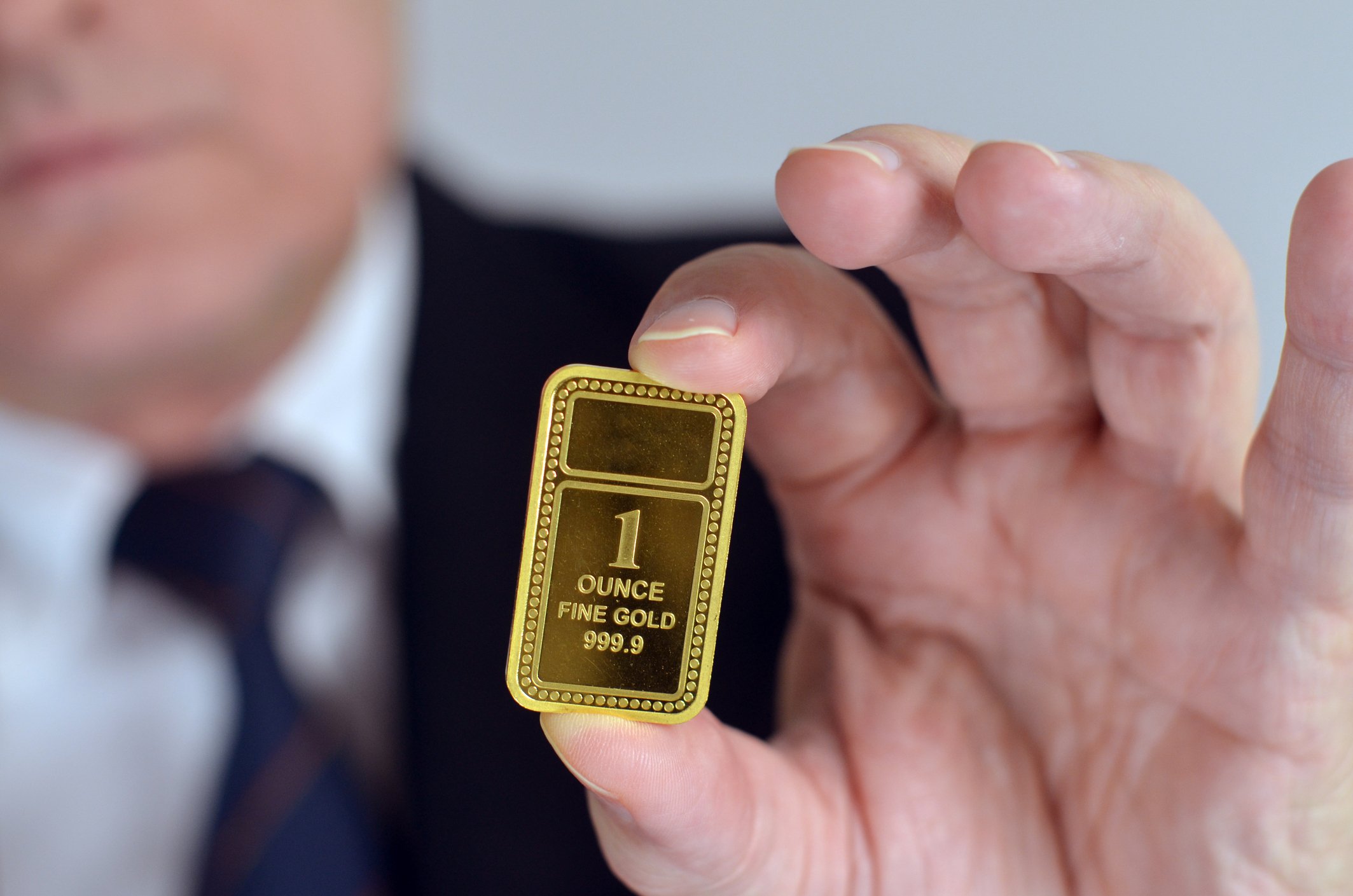Precious metals may not be on the radar for every investor, but since the beginning of 2016, gold and gold miners have been among the market's top performers. Since touching $1,050 an ounce in January 2016, gold recently peaked at more than $1,350 an ounce. Higher gold prices not only help investors who buy the physical metal, but they're often a margin booster for the dozens of companies that primarily mine the lustrous yellow metal.
Why gold has been on fire since 2016 began
Why have we seen such a resurgence in gold over the past year and change? The obvious answer is that we've witnessed the U.S. dollar fall to greater than two-year lows against the euro and more than one-year lows against other global currencies. Gold and the dollar often move in opposite directions, so when the dollar is dropping, investors usually seek gold as a safe-haven store of value.

Image source: Getty Images.
Building on that previous point, uncertainty is also a major driver of gold prices. When the U.S. economy is motoring along and economic outlooks are clear, gold usually tends to do poorly. However, there's a lot of uncertainty in Washington right now with healthcare reform failing to pass and concerns brewing over whether or not tax reform has the votes to pass. There's also worry over the escalation between North Korea and the United States. This uncertainty tends to drive investors to gold.
Even the Fed has given a boost to the price of gold. Generally, monetary tightening is bad news for gold. Raising the federal funds target results in higher interest rates, which in turn pushes yields for interest-bearing assets higher. Since gold has no yield, investors may choose to swap out gold for a more guaranteed return. Yet, the Fed's caution in raising rates has kept interest rates well below their historic norm for an extended period of time, giving investors little reason to swap out of gold.
Introducing the new gold thesis: Peak gold
But what if I told you there was a new bull theory on Wall Street for gold, perpetuated by Randall Oliphant, chairman of the World Gold Council. According to Oliphant, people should be considering gold as an investment because we're nearing peak gold. In other words, Oliphant believes that gold production has plateaued and will taper from here on out.

Image source: Getty Images.
In an interview with Bloomberg, Oliphant cited global political risks as impacting supply, yet countered that robust purchases from India and China should keep demand high. This, in his view, should push prices to as high as $1,400 an ounce in the near term and to record highs in the medium term. For context, gold peaked at an intraday high of just over $1,927 an ounce back in September 2011, and I would presume the "medium term" suggests a price target within the next two to five years, although Oliphant didn't specify.
The question is: Does the peak gold thesis pass muster? Even as a gold bull myself, I don't believe so.
Two reason the peak gold thesis probably doesn't hold water
There are two factors at play that I believe could push gold production higher in the years to come. First, we have the ongoing growth of emerging and currently undeveloped markets. Remember that while gold is commonly associated with investing, it has practical purposes in jewelry, dentistry, and as a conductor of electricity in electronic devices such as cellphones. It's reasonable to assume that as demand for gold rises in emerging markets in Southeast Asia, Africa, and the Middle East, production will increase as well to accommodate that demand.
The second factor is a function of price. In other words, if gold prices continue to rise much beyond current levels, can gold producers stick to their guns and keep production levels consistent? I highly doubt it. A healthy increase in gold prices will likely encourage producers to expand existing mines and undertake more in the way of exploratory drilling. This is exactly what happened in the gold mining industry between 2009 and 2011, and it'd probably happen again if prices near record highs in the future. This isn't to say the gold market will be inundated with supply so much as to suggest that higher gold prices will encourage a steady increase to global production, even taking into account global political risks.

Image source: Getty Images.
One of the smartest ways to play higher gold prices
Even if the peak gold thesis seems unlikely, it doesn't change the fact that there are numerous catalysts that could push the lustrous yellow metal higher over the long run. Arguably the best way to take advantage of this expected increase is with a royalty and streaming company like Royal Gold (RGLD 0.31%). Whereas mining companies take time to boost production as a reaction to higher gold prices, Royal Gold would benefit almost immediately.
You see, rather than operating as a traditional mining company and overseeing day-to-day operations, Royal Gold enters into long-term deals with mining companies looking to expand an existing mine or develop a new one. In return for supplying other miners with upfront cash, Royal Gold receives a percentage of production for a well-below market rate (sub-$400 an ounce for gold). The result is that Royal Gold keeps the difference between the current spot price and what it pays its contracted partners as profit. Thusly, Royal Gold can benefit immediately if gold prices rise. And, as icing on the cake, it has one of the highest operating margins in the industry.






